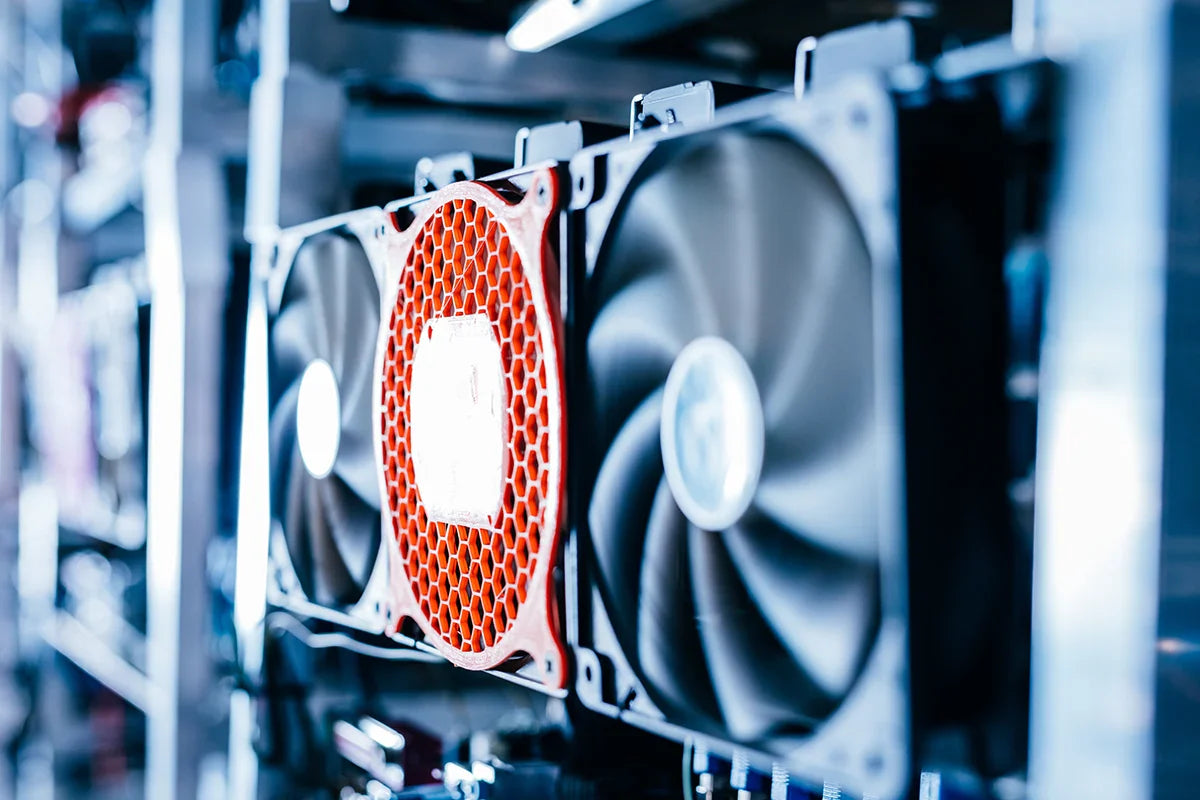If you are a gamer, a content producer, or any professional depending on high-performance PCs, knowledge of thermal throttling is quite crucial. This is when your computer's central processing unit or graphics processing unit slows down. This happens to avoid overheating, therefore leading to frustrating performance drops.
Knowing and staying clear of thermal throttling helps your system remain cold, run effectively, and maintain the highest performance under tough conditions.
In this blog, we'll explain what thermal throttling is, highlight its common signs, explore the main causes, and most importantly share proven strategies to prevent it.
What is Thermal Throttling?
It is a built-in safety mechanism in modern CPUs and GPUs that automatically reduces performance when temperatures rise too high.
In order to minimize heat output and guard against possible damage, the system automatically reduces its clock speed when a component reaches a predetermined high temperature.
While thermal throttling helps prevent overheating and extends component lifespan, it often results in noticeable slowdowns, such as lag in games, lower frame rates, or sluggish performance.
GPU Throttling Vs CPU Throttling
Although the idea is the same, CPU throttling and GPU throttling happen in unique ways:
-
Slowing the CPU lowers heat output, therefore impacting the general system reaction.
-
Slowing the GPU reduces graphics processing speeds to prevent overheating during gaming or rendering tasks.
For instance, during a game session you might observe FPS drops or lag, which sometimes indicate that thermal throttling is at work. Although it lets the hardware cool down temporarily, this slowing can affect your experience if it happens frequently.
Signs of Thermal Throttling
Early identification of thermal throttling enables you to take remedial steps before it leads to performance problems. Common indications of thermal throttling include these:
-
Surprises in performance drops, unexpected declines in game FPS, or slower rendering times.
-
Visible freezes or stutters during demanding activities point toward system lag or stuttering.
-
High fan speeds to cool the system, fans spinning at or close to maximum RPMs.
-
CPU or GPU temperatures over recommended thresholds (normally more than 80°C for CPUs and 85°C for GPUs).
Real-time monitoring of component temperatures and detection of any throttling using tools such as HWMonitor or MSI Afterburner can help you.
Common Causes of Thermal Throttling
Knowing what triggers extreme heat helps you to avoid thermal throttling properly. The following are some common causes:
1. Bad Airflow within the PC Case
Poor airflow keeps heat from escaping effectively. Obstructions in vents, clogged filters, or insufficient case fans can trap hot air inside, therefore increasing component temperatures.
2. Old or Insufficient Thermal Paste
Thermal paste enables heat movement from your CPU/GPU to their heatsinks. Over time, thermal paste can dry out or deteriorate, lowering its efficiency.
3. Overclocking without Adequate Cooling
Although overclocking enhances performance, it also generates more heat. Overclocked components are more susceptible to thermal throttling in the absence of strong cooling systems.
4. Fan and Heat Sink Dust Accumulation
Dust isolates and obstructs both heat dissipation and airflow. Maintaining peak cooling calls for periodic cleaning.
5. Compact or Closed Personal Computer Enclosures
Compact or badly ventilated housings restrict airflow, therefore impeding heat dissipation and raising the possibility of overheating.
How to Avoid Thermal Throttling
Maintaining peak system performance requires prevention first and foremost. Practical measures to avoid thermal throttling include these:
1. Improve Cooling
-
Consider swapping your CPU and GPU to premium air coolers or liquid cooling technologies to improve your cooling.
-
Add or change case fans to guarantee constant intake of cold air and exhaust of hot air.
-
To dynamically react to temperature variations, change fan speeds via BIOS or programs like MSI Afterburner.
2. Undervolting
It reduces temperatures without greatly sacrificing performance by lowering the voltage given to your CPU or GPU. Undervolt safely using tools like Intel XTU or AMD Ryzen Master.
3. Reweigh Thermal Paste
Reapplying thermal paste every one to two years can greatly improve heat transfer. Ensure correct application and use of premium thermal compounds.
4. Standard Cleaning
Regularly clean fans, heatsinks, and vents of dust and debris with compressed air and soft brushes.
5. Keep an Eye on Temperatures
Regularly checking temperatures lets you spot early possible problems. For real-time tracking, tools such as HWMonitor or MSI Afterburner are priceless.
6. Improve the PC's Case
Think about improving to a case with an improved airflow design if yours is tiny or without ventilation. Open or mesh panels help to improve heat dissipation.
Final Considerations
Ignoring thermal throttling can quietly disrupt performance, especially for gamers, content creators, and professionals who rely on consistent, high-powered output. By recognizing the warning signs, understanding the root causes, and applying effective prevention strategies, you can maintain optimal system performance and significantly extend the lifespan of your hardware.
Ready to upgrade your PC for superior thermal management and peak performance?
Discover the latest lineup of high-performance, thermally optimized prebuilt PCs at Technoid Inc. Designed with advanced cooling solutions, top-tier components, and precision engineering, our systems let you game, create, and multitask without ever overheating.
Push the limits without breaking a sweat!
Frequently Asked Questions
1. How can I check the temperature?
Applications like HWMonitor or MSI Afterburner let you check temperatures. Your hardware may be throttled if you see performance drops with high temperatures (above manufacturer recommendations).
2. Can I stop thermal throttling?
Although better cooling and maintenance will help to reduce the possibilities, under heavy loads, some thermal throttling might still happen. Its frequency is much decreased by correct monitoring and cooling.
3. Is the overclocking's potential for thermal throttling great?
Yes, overclocking produces more heat. Overclocking demands correct cooling systems to avoid thermal throttling.
4. How often should I replace thermal paste?
Usually, once every one to two years, particularly if you see performance problems or higher temperatures.

 United States
United States

